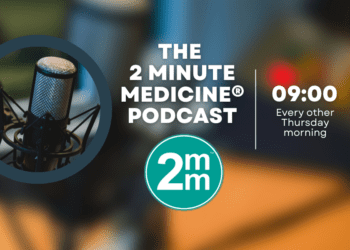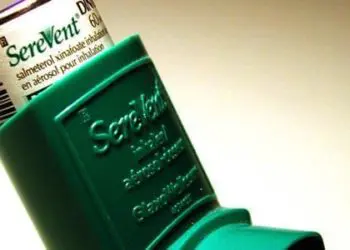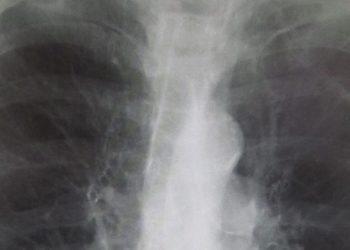Pertussis vaccination not linked to increase in asthma
1. This retrospective study found that children immunized against pertussis, irrespective of the form of vaccine or vaccination schedule used, were not at greater odds to require medications for asthma in adolescence.
Evidence: 2 (Good)
Study Rundown: Routine childhood immunization rates continue to be suboptimal despite the proven benefits of vaccines. Parents who opt out of immunizations often cite concern over a vaccination-induced immune changes as a factor in their decision. This study investigated whether immune modifications induced by pertussis vaccination were connected to the development of asthma. Pertussis vaccinated and unvaccinated Swedish residents participating in a pertussis vaccine efficiency trial were included in this retrospective analysis, which examined asthma medication as a proxy for the condition. Individuals who received the pertussis vaccine in infancy did not have significantly higher odds of receiving prescriptions for asthma medication when compared to those unvaccinated. While this study was limited by its use of specific prescription medications as a surrogate for asthma diagnosis and its inclusion of various vaccine types, this large study’s results suggest that rates of asthma treatment are not associated with pertussis vaccination.
Click to read the study, published today in Pediatrics
Relevant Reading: Vaccinated Children and Adolescents With Pertussis Infections Experience Reduced Illness Severity and Duration, Oregon 2010-2012
Study Author, Dr. Hartmut Vogt talks to 2 Minute Medicine: Linköping University, Faculty of Health Sciences, Department of Pediatrics and Department of Clinical and Experimental Medicine.
“Our article is a significant addition to the field of public health and the ongoing discussion about the potential risk of vaccination being associated with disease outcomes of concern. Parents show an increasing apprehension about vaccination, especially as this is often the first active decision they make for their child’s health. With the help of our extraordinary databases in Sweden generating an extremely large sample size in our study including a large number of non-vaccinated children we were able to draw definite conclusions about the risk of asthma among teens having been vaccinated against pertussis during infancy. Study like ours are of great importance for health care givers in family medicine, pediatrics and many other medical fields during their daily work when making decisions about vaccinating a young infant and meeting parents in their fear and concerns about their child’s health. Our study has clearly shown that there is no association between infant immunization against pertussis and the risk of asthma later in childhood.”
In-Depth [retrospective case-control study]: A total of 79 671 infants (mean gestational age = 39-41 weeks, 50.9% male) born in Sweden between January 1993 and December 1994, participating in an efficacy trial comparing acellular pertussis vaccines to whole cell pertussis vaccine were included in the study. A control group included 98 475 infants (mean gestational age = 39-41 weeks, 51.1% male) born either 5 months prior to or 7 months following the pertussis vaccination trial. Also included in the study population were 21 485 children (mean gestational age = 39-41 weeks, 50.6% male) who were not vaccinated, during the vaccine trial period. By including this subpopulation, certain confounders such as parental attitudes towards health care could be addressed. Prevalence of commonly prescribed asthma medications at ages 15-16 years was taken from the Swedish Prescribed Drug Register. Anti-inflammatory or any asthma medication prescription at the age of 15 within the entire study population were 4.6% and 7.0% respectively. Both an intention-to-treat analysis and per-protocol analysis* did not reveal greater odds of asthma medication among those immunized against pertussis (adjusted odds ratio (OR) for dispensation of any asthma medication in the vaccinated population = 0.99, 95% CI, 0.95-1.03; OR = 1 among vaccinated participants born outside the vaccination trial period; OR = 0.99, 95% CI, 0.92-1.08 among unvaccinated individuals born during the vaccination trial period).
*When performing an intention-to-treat analysis, all subjects initially assigned to a particular group are included and there is no exclusion for noncompliance or participant dropout. This allows researchers to minimize bias attributed to missing data. In a per-protocol analysis, only subjects who continued to fulfill the requirements of their assigned group are included when generating the results.
More from this author: Weight loss interventions concurrently targeting parent and child benefits both parties; Severity of post-concussive symptoms not predictive of recovery
Image: PD
©2012-2014 2minutemedicine.com. All rights reserved. No works may be reproduced without expressed written consent from 2minutemedicine.com. Disclaimer: We present factual information directly from peer reviewed medical journals. No post should be construed as medical advice and is not intended as such by the authors, editors, staff or by 2minutemedicine.com. PLEASE SEE A HEALTHCARE PROVIDER IN YOUR AREA IF YOU SEEK MEDICAL ADVICE OF ANY SORT.







